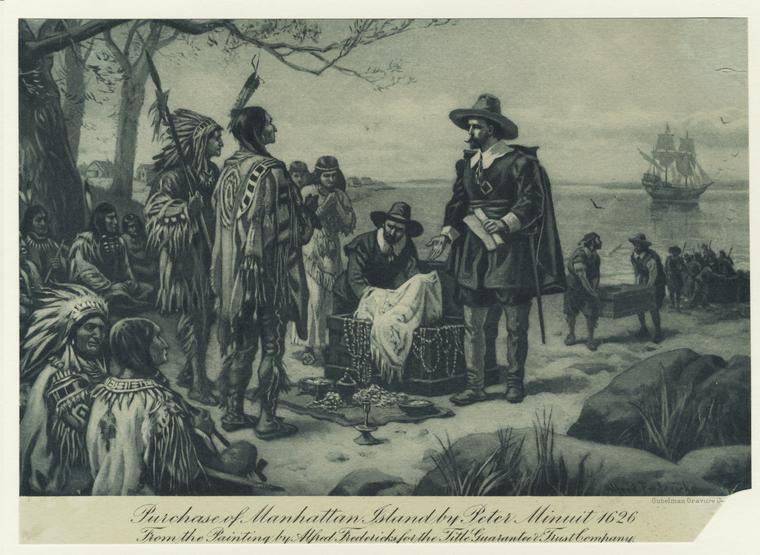In observance of Indigenous Peoples’ Day, a federally recognized holiday as of 2021, the SoHo Broadway Initiative is looking back at the history of Broadway and the significance of the Wickquasgeck Trail, a 13-mile-long trade route stewarded by the Lenape people, traversing the vast geographies of the island, Manahatta. The Wickquasgeck Trail served as a vital link for trade and communication between Lenape communities; it was a physical manifestation of the enduring interrelationship between people and their land.
Dutch colonial presence and land acquisition expanded during 17th-century with the creation of the Dutch West India Company in 1621. In 1626, the Dutch acquired land from the Lenape in exchange for goods amounting to 60 Dutch guilders (twenty-four U.S. dollars) and established the colony of New Amsterdam in what is considered Lower Manhattan today. However, historians acknowledge the subtleties and distinctions inherent to the “purchase” of Manhattan. The enduring narrative that the Lenape sold their ancestral land to Dutch colonists for only twenty-four dollars does not seriously consider the different cultural and economic views of land held by the Lenape communities.

Dutch colonists turned the Wickquasgeck Trail into BredeStraat, which translates to “broad street.” In the late 17th-century, English colonists renamed the street to Broadway. Through all of its iterations, Broadway is at the heart of the city’s economic activity. Acknowledging the significance of the Wickquasgeck Trail is not only an act of historical land acknowledgment but also a commitment to valuing the past, present and future contributions from Indigenous peoples on our culture, economy and built environment.